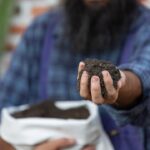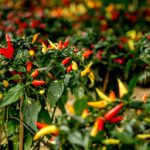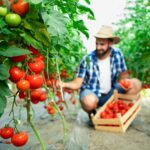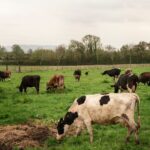In times of water scarcity, smart crop selection becomes essential for farmers and home gardeners alike. Growing drought-tolerant crops not only helps conserve water but also ensures food security and income even under challenging climatic conditions. Here’s a guide to the best crops to grow during water restrictions, focusing on resilience, low water needs, and productivity.
1. Sweet Potatoes
Sweet potatoes are hardy, require little water once established, and thrive in warm, dry climates. They grow well in sandy soils and can produce high yields even with minimal irrigation. In addition to being nutritious, their vines also serve as livestock fodder.
2. Cowpeas (Black-eyed peas)
Cowpeas are an excellent legume for dry conditions. They are fast-growing, fix nitrogen in the soil, and tolerate heat and drought well. Cowpeas can be used for human consumption, animal feed, or soil improvement.
3. Sorghum
This cereal grain is well-suited to hot, dry regions. Sorghum matures quickly and requires much less water than maize. It is versatile—used for grain, forage, and even biofuel—and has strong market demand in many parts of Africa.
4. Amaranth
Both the leaves and seeds of amaranth are edible and packed with nutrients. The plant is drought-tolerant and grows rapidly in poor soils. Its short growing cycle makes it ideal for regions facing inconsistent rainfall.
5. Millet
Millet is another cereal grain that thrives under dry conditions. It grows quickly, is highly nutritious, and adapts well to sandy or shallow soils. Millet also stores well, making it a staple crop in arid regions.
6. Pumpkins and Squash
Once established, these plants have deep root systems that access water efficiently. They spread widely and can shade the soil, reducing evaporation. Pumpkins are especially suitable for mixed cropping with drought-resistant legumes.
7. Okra (Lady’s Finger)
Okra grows well in warm climates and can tolerate dry spells once it’s past the seedling stage. It produces pods over a long period, ensuring a continuous harvest with modest watering.
8. Sunflowers
Sunflowers are deep-rooted and drought-resistant. Besides producing edible seeds, they can also improve soil structure. They are ideal for dry zones and are a good rotation crop to reduce pests and diseases.
9. Aloe Vera
This succulent thrives on neglect and little water. Aloe is highly marketable for medicinal and cosmetic uses. It requires minimal care and is ideal for water-scarce home gardens.
10. Herbs (Thyme, Rosemary, Oregano)
Mediterranean herbs like rosemary, thyme, and oregano are naturally adapted to dry climates. They are low maintenance, water-efficient, and offer both culinary and medicinal value.
Tips for Water-Efficient Gardening or Farming:
- Mulching: Apply organic mulch around crops to retain moisture and reduce evaporation.
- Drip Irrigation: Use drip systems to deliver water directly to the roots, minimizing waste.
- Rainwater Harvesting: Collect and store rainwater for use during dry periods.
- Soil Improvement: Add compost to improve soil structure and water retention capacity.
Growing crops during water restrictions is entirely possible with the right choices. Drought-tolerant crops not only help save water but also ensure food production continues even in harsh conditions. By adapting to changing climates and practicing water-wise farming, gardeners and farmers can remain productive while protecting precious water resources.
Join 'Farmers Mag' WhatsApp Channel
Get the latest Farming news and tips delivered straight to your WhatsApp
CLICK HERE TO JOIN






